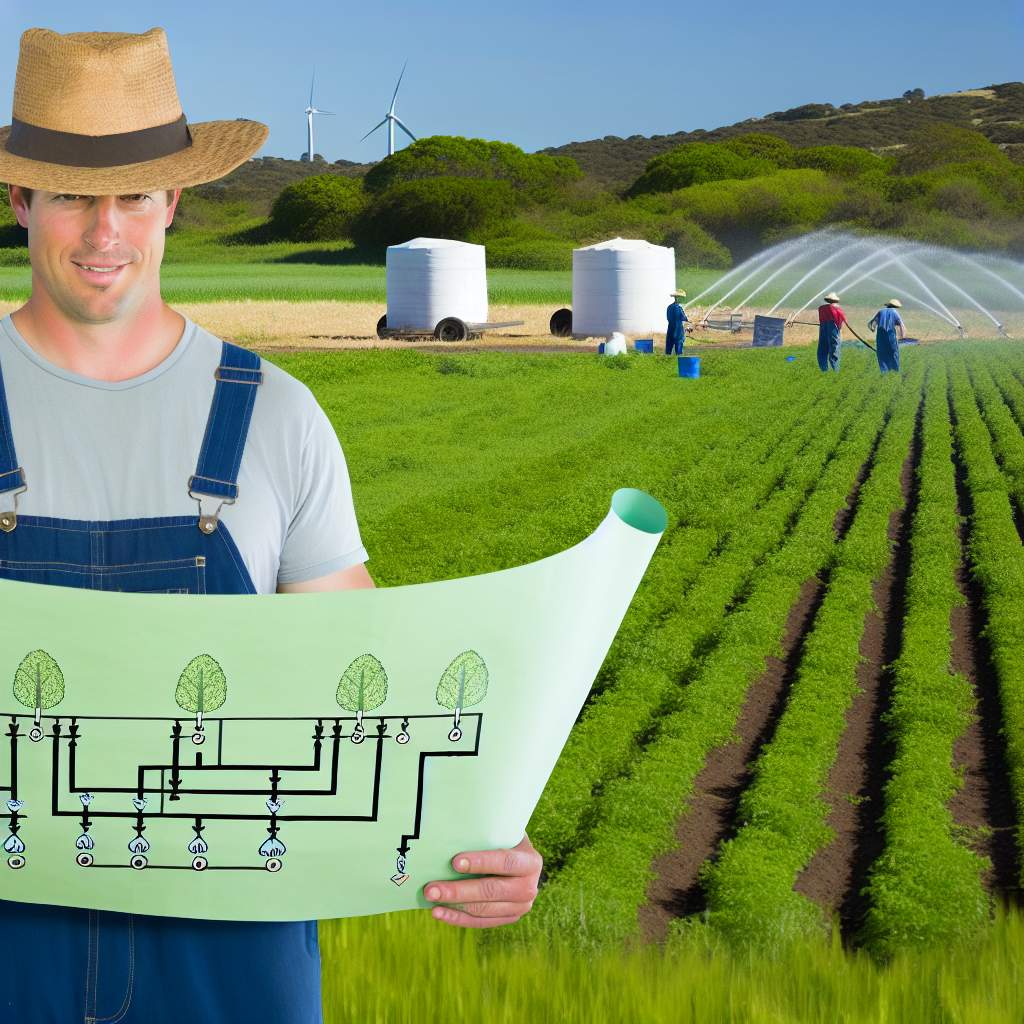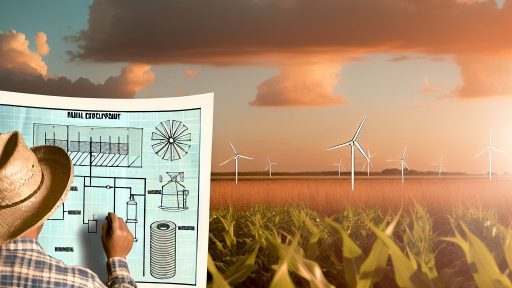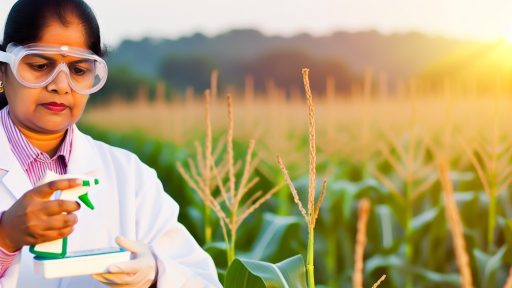Introduction to Sustainable Farming and Its Importance
Defining Sustainable Farming
Sustainable farming refers to agricultural practices that meet current food needs.
It strives to preserve the environment for future generations.
This approach encompasses various strategies to minimize ecological impact.
Environmental Benefits
Sustainable farming promotes biodiversity and soil health.
It reduces reliance on harmful pesticides and chemical fertilizers.
Moreover, it helps in conserving water and protecting natural ecosystems.
Economic Advantages
This farming method can lower production costs over time.
It enhances the resilience of farming systems against market fluctuations.
Farmers benefit from diversified crops, leading to increased income opportunities.
Social Implications
Sustainable farming supports local communities and small-scale farmers.
It promotes food security by providing access to healthy, local foods.
This method fosters community engagement and consumer awareness regarding food sources.
Future of Sustainable Farming
Innovative technologies are emerging to enhance sustainable practices.
These advancements can improve efficiency and yield while conserving resources.
Furthermore, collaboration among stakeholders will drive sustainable agriculture forward.
Transform Your Agribusiness
Unlock your farm's potential with expert advice tailored to your needs. Get actionable steps that drive real results.
Get StartedOverview of Conservation Programs and Their Role in Agriculture
Defining Conservation Programs
Conservation programs aim to protect natural resources in agriculture.
They focus on soil, water, and biodiversity preservation.
Farmers and landowners actively participate in these initiatives.
Importance in Sustainable Farming
These programs enhance sustainable farming practices.
Additionally, they contribute to economic viability and environmental health.
Farmers implement techniques to improve soil quality and water efficiency.
Types of Conservation Programs
- Environmental Quality Incentives Program (EQIP)
- Conservation Stewardship Program (CSP)
- Conservation Reserve Program (CRP)
Each program serves specific purposes to support farmers.
They provide financial incentives and technical assistance.
Impact on Farming Practices
Effective conservation programs drive adoption of better farming practices.
Farmers often utilize cover crops and reduced tillage methods.
Such practices improve soil health and reduce erosion risks.
Challenges and Solutions
Despite benefits, farmers face challenges in adopting these programs.
Access to information and funding can pose significant barriers.
Thus, outreach and education are crucial for success.
Partnerships between government agencies and local organizations can help.
Future Directions
Innovation plays a key role in conservation program evolution.
Technology, such as precision agriculture, enhances efficiency.
Moreover, integrating climate-smart practices will become vital.
Ultimately, fostering sustainable practices will ensure agricultural resilience.
Key Principles of Sustainable Farming Practices
Ecological Stewardship
Sustainable farming prioritizes ecological stewardship.
This principle focuses on protecting natural resources.
Farmers adopt practices that conserve soil and water.
Additionally, they encourage biodiversity on their farms.
Resource Efficiency
Efficiency in resource use is crucial for sustainability.
Showcase Your Farming Business
Publish your professional farming services profile on our blog for a one-time fee of $200 and reach a dedicated audience of farmers and agribusiness owners.
Publish Your ProfileFarmers strive to minimize waste in every process.
They utilize energy-efficient technologies for better outcomes.
Furthermore, composting and recycling enhance soil fertility.
Economic Viability
Economic factors play a significant role in sustainable farming.
Farmers need to balance costs with profits effectively.
Investing in sustainable practices can lead to long-term savings.
This approach attracts customers who value ethical products.
Community Engagement
Engagement with local communities fosters sustainable practices.
Farmers can learn from local knowledge and traditions.
Building partnerships encourages shared resources and expertise.
Moreover, collaborative efforts can amplify the impact of conservation programs.
Continuous Improvement
Sustainable farming requires a commitment to continuous improvement.
Farmers must regularly evaluate their practices and adapt.
Innovation in techniques can lead to increased productivity.
Sharing best practices helps the entire community thrive.
Learn More: Navigating Animal Welfare Legislation in Agricultural Operations
Case Studies: Successful Implementation of Conservation Programs
Local Initiatives in Organic Farming
In Willow Creek, farmers adopted organic farming practices.
This shift increased soil health and reduced pesticide use.
The local community supported these changes with educational programs.
As a result, crop yields improved significantly over five years.
Farmers reported a 30% increase in overall productivity.
Water Conservation Techniques in Florida
Farmers in Florida implemented advanced irrigation systems.
They adopted drip irrigation to minimize water waste.
Consequently, their water usage decreased by 40%.
This method allowed for more efficient water management.
As a result, crops thrived even during drought conditions.
Agroforestry Practices in Brazil
In Brazil, agroforestry has gained traction among local farmers.
This practice combines agriculture with tree planting.
Farmers noticed an improvement in biodiversity on their farms.
Moreover, soil erosion significantly decreased.
Overall, agroforestry enhanced both crop resilience and carbon storage.
Collaborative Conservation Efforts in the Midwest
The Midwest region saw collaboration between farmers and conservationists.
They focused on restoring wetlands to enhance local ecosystems.
Funding from government programs supported these initiatives.
Farmers benefited from reduced flooding and improved soil moisture retention.
This collaborative approach led to a healthier agricultural landscape.
Technology-Driven Sustainable Practices in California
California’s farmers embraced technology for sustainability.
They used precision agriculture to optimize input use.
Consequently, pesticide usage decreased by 25%.
This innovative approach resulted in higher quality produce.
Showcase Your Farming Business
Publish your professional farming services profile on our blog for a one-time fee of $200 and reach a dedicated audience of farmers and agribusiness owners.
Publish Your ProfileAdditionally, farmers reported better environmental compliance.
Discover More: Essential Trade Agreements Every Farmer Should Be Aware Of
Benefits of Sustainable Farming for the Environment and Local Communities
Environmental Benefits
Sustainable farming practices protect vital natural resources.
They enhance soil health and improve water quality.
Moreover, these practices promote biodiversity and habitat restoration.
Farmers reduce the use of harmful chemicals through these methods.
Consequently, ecosystems remain healthier and more resilient.
Economic Advantages for Local Communities
Sustainable farming supports local economies positively.
By sourcing food locally, communities strengthen food security.
This approach thrives on regional agricultural systems.
Farmers benefit from diversified income through sustainable practices.
Additionally, local jobs increase within agricultural sectors.
Social and Health Benefits
Healthier food options emerge from sustainable farming.
Local consumers gain access to fresh and nutritious produce.
Moreover, reduced chemical usage leads to improved public health.
Community engagement grows through active participation in farming.
This approach fosters resilience and social ties among residents.
Long-Term Sustainability
Sustainable farming establishes practices for future generations.
It can effectively combat climate change’s adverse effects.
Farmers play a crucial role in maintaining ecological balance.
This proactive approach ensures food production remains viable.
Thus, communities can thrive while preserving the environment.
Discover More: Navigating Government Incentives for Farm Renewable Projects

Challenges in Adopting Conservation Programs in Agriculture
Financial Constraints
Many farmers face significant financial burdens when adopting conservation programs.
Limited budgets can prevent investment in sustainable practices.
Moreover, initial costs often deter farmers from participating.
Transitioning to conservation methods may require upfront capital for new equipment.
Additionally, ongoing maintenance costs can strain financial resources.
Lack of Technical Knowledge
Farmers often lack the necessary technical knowledge to implement new practices.
This gap can lead to ineffective application of conservation techniques.
Training programs may not always be readily available.
Furthermore, some farmers may feel overwhelmed by the complexity of new methods.
Market Pressures
Farmers often feel pressured by market demands for inexpensive products.
Short-term profits can overshadow the long-term benefits of sustainability.
In competitive markets, investing in conservation can seem less appealing.
Moreover, buyers may not prioritize sustainable practices in purchasing decisions.
Cultural Resistance
Some agricultural communities resist changing traditional practices.
Established routines can be hard to alter, even when benefits exist.
Social norms within farming communities can discourage innovative approaches.
Additionally, historical methods can foster a sense of pride and identity.
Showcase Your Farming Business
Publish your professional farming services profile on our blog for a one-time fee of $200 and reach a dedicated audience of farmers and agribusiness owners.
Publish Your ProfilePolicy and Regulatory Challenges
Government policies may not sufficiently support conservation efforts.
Regulations can sometimes complicate or hinder adoption.
Farmers may find it difficult to navigate environmental guidelines.
Moreover, inconsistent incentives can lead to confusion and disengagement.
You Might Also Like: Top Strategies for Farmers to Obtain Research and Development Funding
Policy Frameworks Supporting Sustainable Farming Initiatives
Introduction to Policy Frameworks
Policy frameworks shape the future of sustainable farming.
They establish guidelines for environmental conservation.
Effective policies encourage farmers to adopt sustainable practices.
Additionally, these frameworks promote collaboration among stakeholders.
Government Initiatives
Many governments offer programs supporting sustainable farming.
For instance, the U.S. Department of Agriculture (USDA) provides funds.
These funds assist farmers transitioning to sustainable methods.
Moreover, governments create incentives for reduced chemical use.
Non-Governmental Organizations
Non-governmental organizations (NGOs) play a critical role.
They work to promote sustainable agricultural practices globally.
Organizations like the World Wildlife Fund advocate for holistic approaches.
These NGOs help farmers gain access to sustainable technology.
International Agreements
International agreements foster sustainable agriculture worldwide.
Such agreements encourage countries to share best practices.
They also address global challenges like climate change.
The Paris Agreement, for example, emphasizes sustainable land use.
Community-Based Programs
Local communities often develop their own sustainable programs.
These initiatives focus on regional agricultural needs.
Farmers collaborate to share resources and knowledge.
As a result, they enhance local ecosystem health.
Public Awareness and Education
Public education boosts awareness about sustainable practices.
Workshops and seminars inform farmers about new practices.
These educational efforts often occur through local universities.
Furthermore, outreach programs engage the community effectively.
Monitoring and Evaluation of Policies
Monitoring ensures policies achieve intended environmental impact.
Regular evaluations identify areas for improvement.
Farmers and policymakers collaborate in this process.
Consequently, adaptive measures can be swiftly implemented.
Future Trends in Sustainable Agriculture and Conservation Strategies
Innovative Agricultural Practices
Farmers increasingly adopt precision farming techniques.
This technology optimizes field-level management regarding crop farming.
Moreover, drones and sensors help monitor crop health effectively.
As a result, resource usage decreases while yield increases.
Agroecological Approaches
Agroecology integrates ecological principles into farming.
It fosters biodiversity, enhances soil fertility, and improves water management.
Transitioning to these methods offers resilience against climate change.
Showcase Your Farming Business
Publish your professional farming services profile on our blog for a one-time fee of $200 and reach a dedicated audience of farmers and agribusiness owners.
Publish Your ProfileConsequently, farmers gain sustainable productivity over time.
Regenerative Agriculture
Regenerative agriculture focuses on rebuilding soil health.
This practice goes beyond sustainability by enhancing ecosystem services.
It employs techniques like cover cropping and reduced tillage.
Farmers witness improved carbon sequestration and increased biodiversity.
Public and Private Partnerships
Collaboration between governments and agricultural organizations grows.
These partnerships fund innovative conservation programs sustainably.
Additionally, they provide essential support for farmers adopting greener practices.
Such initiatives will foster community resilience and environmental awareness.
Consumer-Led Sustainability Initiatives
Consumers drive demand for sustainably grown products.
This shift encourages farmers to adopt eco-friendly methods.
Moreover, transparent labeling enhances consumer trust and engagement.
Consequently, agricultural practices are evolving to meet market needs.
Technological Advancements
Technological innovations significantly impact sustainable farming.
Artificial intelligence and machine learning optimize resource management.
These advancements help predict challenges and assist in crop management.
Ultimately, they enhance efficiency while minimizing environmental impact.
Policy and Legislative Changes
Policy frameworks increasingly support sustainable agriculture.
New legislation promotes conservation practices among farmers.
Incentive programs encourage the adoption of green technologies.
This trend reflects growing recognition of agriculture’s environmental impact.
Additional Resources
What is the Farm Bill? – National Sustainable Agriculture Coalition




